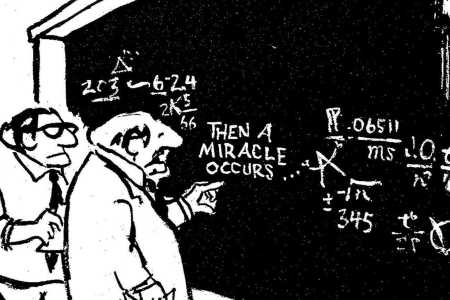Voodoo Economics, as George H.W. Bush named it in 1980, is what caused most of our national debt. It came from Wall Street and goes by the name “supply-side economics.” Here’s where you can find out about it. Since Ronald Reagan was a supply-sider, once Bush became his V.P. he had to change his tune. Watch this 22 second video:
More Voodoo-Economics Information:
- National-Debt Graph Main Page
- Wasn’t it Congress? See the what Reagan asked for and what he got.
Voodoo: Not Traditional Republicanism:
The debt problem comes from Wall Street supply-siders taking over the Republicans. Ike, Nixon and Ford, all good Republicans, brought the debt down 11 out of 16 years. supply-siders brought it down 0 out of 20. That’s batting 688 versus batting 0. And G.H.W. Bush was no supply-sider — he called it voodoo economics. He just got trapped by Reagan’s supply-side policies. He passed a tax increase trying to partially undo Reagan’s damage, but the supply-side Republicans turned on him, and he was not re-elected.
So supply-sides are far from traditional Republican balanced-budget values. Cheney, a supply-sider, said “Reagan proved deficits don’t matter.” Unfortunately the supply-siders have now pretty much captured the Republican party.
Supply-Side “Economics” — It Came from Wall Street
Supply-side economics was started by the the Wall St. Journal opinion editor, Robert Bartley and his right-hand man Jude Wanniski. They worked with two economists, Arthur Laffer and Robert Mundell. But Bartley took the lead, and much of supply-side economics was developed by him and Laffer at a series of dinners at Michael 1, a posh restaurant a few steps from Wall Street.
They viewed it as an attack on Keynesian economics, which described how to get out of a depression by having the government increase demand for goods and services from the private sector. This is how we got out of the Great Depression during World War II (though Keynesian economics does not suggest war as even a possible policy measure). Since Keynes focused on the demand side, Bartley and Laffer focussed on the supply side (remember “supply and demand”) and call their theory “supply-side economics.”
Standard Economics: Liberal and Conservative
In a nutshell, Keynesian (demand-side) economics, says that when a country is in a recession, it’s because businesses don’t have enough business. That is, people are not buying as much as usual, so they can’t sell enough, so they lay people off, and then the people who are laid off, or are afraid of being laid off, buy even less. To get things going, we need something to increase demand. Conservative economists tend to say — have the Fed reduce interest rates so people and businesses will borrow and spend more. Liberal economists tend to say have the government cut taxes for the poor, because they will spend, or have the government borrow and spend more to help business get started again.
The right answer, is that in a regular recession, monetary policy works and is much easier to use so that is best. But in a terrible recession or a depression, the interest rate goes down to about zero and can’t go any lower, so then monetary policy stops working. Then you need Keynesian economics — like the spending for World War II>
Supply-Side Voodoo
Both conservative (monetarist — like Milton Friedman) and liberal (Keynesian) economists say that the government needs to stimulate demand in a recession. But the two “supply-side” economist say both are wrong, that we need to give tax cuts to the rich and then the rich will be stimulated to work much harder and they are the ones who are most productive and that will make the economy hum again. Laffer drew his famous “Laffer curve” to try to prove this point (but it is just plain silly). It claims that if the government cuts their tax rate, the rich will make so much more money that they will pay more taxes not less. It also claims that if you cut the tax rate for the bottom 98% of the population this won’t happen.
So this was tried under Reagan. Big tax cuts for the rich. And G. W. H. Bush called this “voodoo economics,” because only two economists believed it (or at least they often said they did), and because the idea that cutting taxes for the rich would collect more money not less. Of course it never worked, and that’s one reason the supply-siders ran up the debt (even compared to GDP) for 20 out of 20 years, while other Presidents, both Republicans and Democrats did not have this problem.
An New Alternative Explanation: The “Theory” of Voodoo Economics
The fundamental assumption of Voodoo (aka supply-side) economics, is that if you cut taxes for the rich, they will pay more taxes, or as they put it “tax revenues will increase.”
Here’s their proof: If the tax rate is 100% then you can’t keep any of the money you make, so why bother? So you make no money and pay no taxes. At a lower tax rate people do work and pay taxes. So cutting taxes below 100% increases tax revenue.
That only makes sense for tax rates near 100%
If that’s not clear, read this: Consider cutting the tax rate 80% to 40% (about like Reagan did). Say you’re making $100 million a year like the a typical billionaire. Then your taxes are cut from $80 to $40 million and your after-tax income goes from $20 to $60 million. That’s pretty sweet. Is that going to make you work so much harder that you more than double your income. If you could, you already would have. So no, you will just happily take home triple what you did before, and maybe even work less.
Even standard supply-side theory says this doesn’t work for lower-tax rates like the middle class pays. For them, supply-side says if you cut their tax rate, they will pay less tax.
This is why Wall Street invented and loves supply-side “theory.” It “proves” that to collect more taxes, cut the tax rate for the rich and raise it for the middle class. That’s why top Republican’s fell for this nonsense. It sounded soooooo good.
Why this matters
Supply-side economics is dishonest. The supply-siders didn’t even mind conning their own man Reagan. The tax-cut “theory” only actually applied to the rich. So the plan was to cut tax rates for the rich in half, which they did. To get this through they had to cut taxes for the middle class some too, but they counted on inflation pushing the middle class back into higher tax brackets. But cutting the top bracket had a permanent effect because there is no higher bracket to get pushed into.
So not only was cutting taxes to raise money crazy, it was just a deception to cut taxes for the richest and then use the deficits to force cuts in services for the middle class and the poor. The Republicans have almost all gone over to the supply side now, and many, like Reagan, have been brainwashed into believing it. G.W. Bush claimed he would “retire nearly $1 trillion in debt over the next four years. This will be the largest debt reduction ever achieved by any nation at any time.” I think he actually believed that.
There are a lot of lies in circulation. Blaming the Democrats for the debt is just one of them. See some others in this little slide show.


 Ripped Apart
Ripped Apart


The five faces of President Bush the I. He’d be right home with these liars and carpet bagging yahoos in both the Senate and Congress we have today. They could of addressed this debt ceiling shenanigans months ago. Never leave a drama yet to play. Both donkeys and elephants there all the same. Silly of em to pretend otherwise. Except for ol Bernie and Liz W. Of course